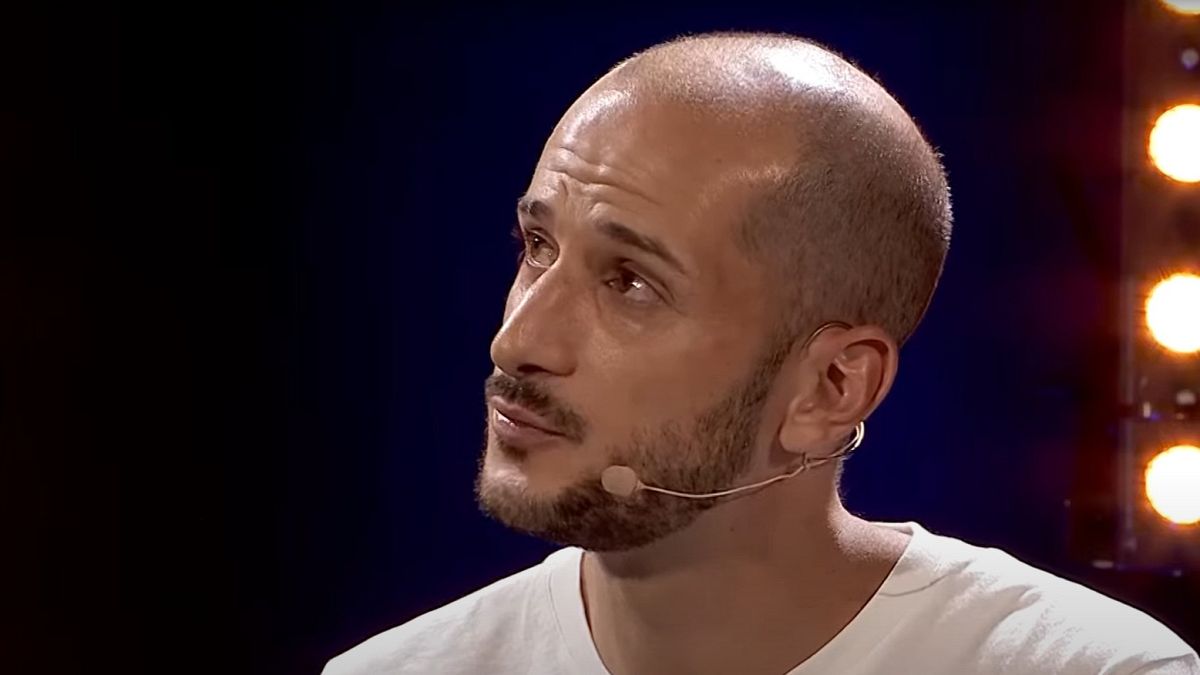Trump, stockholders, algorithms all coming for nonprofit kids TV, incl. Sesame Street


On the set of Sesame Street in early May, as the show was deep in filming for its upcoming season, the team was still in lock-step — clearly experts after nearly six decades of producing the program. Some things still stood out: set monitors showed mock animations on screen as the puppeteers filmed an upcoming Cookie Monster-centered episode, and Sesame Workshop representatives explained that portions of the new season may include entirely animated backgrounds, harkening back to the old "Elmo's World" green screen set.
Not long after, it became clear that this was part of the PBS program's new distribution plan, as it was announced Sesame Street's residents would be packing up and moving to Netflix. The company was bringing back old things, including "Elmo's World," and introducing new animation segments and interactive options to "freshen" up the format.
Users online rejoiced that the streaming giant was "saving" the show from Trump's cost-cutting axe — just a week earlier, the administration announced the termination of the Department of Education Ready To Learn grant, a funding stream that has kept PBS, the home of Sesame Street, up and running for 30 years. But that wasn't the only incentive for the streaming giant to take on the beloved muppets.
Finding a new cash cow
Before Netflix, Sesame was an HBO darling, with the company acquiring rights to air episodes in 2015 — as part of the deal, Sesame Street episodes aired exclusively to Max first, then went to PBS for free.
Adjusting the program's priority to streamers was a necessary move to keep it afloat and in front of kid's eyes. A 2023 Nielsen report found that streaming services made up more than a third of TV watching for children, with broadcast dropping to 20 percent. Linear television, AKA broadcast channels with set programming schedules, have cratered over the years, as younger kids flock to the vast options of streaming platforms and content created by online influencers. Kids are looking at smaller screens, and wider content options.
According to Netflix, kids and family entertainment makes up 15 percent of the platform's total viewing, with a lot of their new offerings being offshoots of large-budget IP, existing franchises, or even content creators, like popular TikTok and YouTube star Ms. Rachel.
"The truth of the matter is, doing what's best for kids isn't always going to drive a lot of revenue."
Still, not even streaming services present a stable home for children's content amid the profit demands of the entertainment industry. The Sesame-Max partnership ended in December, with Max saying it was part of a new corporate strategy of investing less in children's programming. "Based on consumer usage and feedback, we’ve had to prioritize our focus on stories for adults and families. And so new episodes from Sesame Street, at this time, are not as core to our strategy," said a spokesperson.
"The media industry has shifted its focus," DeWitt explained. "There was a lot of retraction in the commercial industry around kids' content, because kids' content wasn't driving subscribers to streaming. The big companies who had been putting a lot of investment into children's content, which was great for everybody, suddenly started to really pull back."
Streaming services can offer a myriad of benefits for children's content, without as many constraints as the broadcast model, DeWitt said. Instead, they're increasingly unreliable, focusing mainly on leveraging children's media, including video games, that can be translated into dollar signs, said Rachel Franz, early childhood advocacy program director at nonprofit Fairplay. Fairplay works to build commercial-free time and space for children, focused on developmentally appropriate screen time beyond big brands.
Franz asks: "What's the reason for creating this media and what role does profit have?"
Demand for digital content is a 'chicken or the egg' question
Streaming and entertainment giants say they're meeting viewer demand with new viewing experiences and multimedia activities. Video watching still makes up the majority of screen time for children from the time they are born to around eight years old, Franz explained. According to a recent report by nonprofit Common Sense Media, 60 percent of daily screen time for a child under the age of eight is devoted to videos. Video games, meanwhile, have steadily taken over the second spot.
Entertainment companies have nurtured the shift. Disney, for example, bought a $1.5 billion stake in Fortnite-maker Epic Games with the goal of creating an "expansive, open, persistent, and social universe" for fans of its various IP. Netflix has begun replacing its other interactive video options, like its brief choose-your-own-adventure entries, with more games content, including its new Sesame Street partnership. "They are using the license of Sesame Street to create a game version of Sesame Street, which is completely unnecessary," argued Franz.
These companies' highly-popular games apps, paired with large wallets and algorithmic dominance in the streaming world, are a recipe for exploitation, Franz says. "When there isn't public funding, and entities like Sesame have to go and cut deals with Netflix, young children get exposed to manipulative design tactics like auto play and personal content that's driven by data collection, not by children's real likes and dislikes — platforms that are designed to exploit kids by maximizing engagement instead of educating them," said Franz. "Licensing of branded games is part of what they're pushed toward when they don't have funding."
Early childhood development experts like Franz fear that these shifts lead to a loss of autonomy among children and parents, who are desperately seeking ways to entertain and educate their kids. Personalized algorithms and widespread data collection aren't inherent risks with broadcast TV. They are with streaming. "We don't see it as an accident that that's where kids are [being forced to access content]," Franz says. "It's the result of a powerful business model that lures kids and families in."
Advocates argue that business — and a federal government trying to operate like one — is interfering with the possibility of a positive childhood relationship with screens and media. And as tech and the entertainment industry speed up, the slower pace of developing age appropriate games and television is less enticing to major companies.
"The truth of the matter is, doing what's best for kids isn't always going to drive a lot of revenue," said DeWitt.
The free PBS KIDS Games app, for example, averages 3.6 million visitors per month, and has become a lifeline for parents who can let their children download content to be viewed later, and play games in an ad-free environment. PBS KIDS has been producing educational games content for years, but, unlike many of the games offered by billion dollar businesses, they are intentionally sandboxed. The app features no ads, no in-app purchases, no outside access — no direct way to get kids hooked or to make money.
"It's the result of a powerful business model that lures kids and families in.
Simultaneously, more kids are gravitating toward social media content, including child content creators and "kidfluencers" — something marketing agencies and entertainment giants are picking up on. According to that same Common Sense Media report, children are watching less live television and cable, while increasing their time spent watching short videos on apps like TikTok, Instagram Reels, or YouTube Shorts. The nonprofit found that average daily time on such apps rose from one minute to 14 minutes between 2020 and 2024.
"A lot of content that kids are seeing right now is being created by people who don't have a background in children's media," said DeWitt. "Who have not gone through the gatekeeper of a network or a producer to get an idea approved, but are really just looking at what can drive the most advertising revenue, what can drive subscriptions. They're posting it on platforms that are not in any way regulated for kids. It's this perfect storm."
More than just Sesame Street
The federal government is leaving no stone unturned in its hunt for supposed corruption, hitting entities like the Environmental Protection Agency, humanitarian agency USAID, and — in what some congressional leaders are likening to a Muppet Red Scare — the residents of Sesame Street.
First, there was the Trump administration's executive order to divest the Corporation for Public Broadcasting (CPB)'s funding away from NPR and PBS, allegedly for promoting "biased" news. Next came sweeping orders to excise funding for DEI-related contracts, and a still ongoing Federal Communications Commission (FCC) investigation into public broadcast channels. What followed was the Ready to Learn grant termination, and Trump's attempt to oust three members of the CPB board.
"We are right now trying to untangle what it means to stop work on a grant of this size," Sara DeWitt, senior vice president and general manager of PBS KIDS, told Mashable days after the May 2 announcement. She was lamentably preparing to furlough swaths of employees as other publicly funded stations readied to sue the Trump administration. "This is hitting us really hard at this moment — and I think it's going to have a big impact on access to high quality content for kids."
Losing Ready to Learn grants is an immediate blow to public media programs and shows, money that went to creating classics like Reading Rainbow and Arthur, as well as new offerings like Lyla in the Loop.
But, even more of a problem, it effectively ended crucial PBS initiatives beyond TV, including an ongoing effort to build libraries of accessible ASL-interpreted content and on-the-ground programming for low-income communities with dozens of member stations. Federal funding stoppages may have far-reaching effects on early childhood research, as well. A week earlier, the Trump administration ordered a freeze on National Science Foundation grants under the guise of anti-woke cost-cutting, the same funding stream used by PBS researchers over decades to explore things like social emotional learning games and new AI-powered shows.
"The Ready to Learn grant has been a significant funder of the research that has helped us improve these services and helped the children's media industry better understand how kids can learn from media," said DeWitt, who worries that a prolonged lapse in funding may have longterm effects on the industry. "It's really coming at us from all sides."
The lack of investment is not just a Trump issue, and it's not just about publicly-funded media, although that is crucial to support and retain. Behind the scenes, research-backed children's media has been fighting within this new, brutally money-hungry entertainment environment — a powder keg reality that turns any threat to federal funding into a lit match.
Seeding a better relationship with TV
But there's movement in a positive direction, too.
Online, parents are beginning to participate in what is being called the "slow" or "gentle" TV movement, said DeWitt. Responding to the highly-stimulating web content popular among children during the early 2020s — e.g., the dancing anthropomorphic fruits of CocoMelon — families are resetting their children's viewing habits with calming, traditional TV, such as Franklin, Bear in the Big Blue House, and dozens of PBS originals. "What these traditional programs offer is a slow pace throughout and a clear starting and stopping point," Franz said, noting the trend is backed by plenty of science.
As a nonprofit, DeWitt explained, PBS KIDS has been able to leverage federal funding to make appropriate kids content more accessible and remain free, including higher-quality experiences for kids who have disabilities or who live in communities where they don't have great access to broadband or devices.
And PBS content is also a crucial resource for schools, primarily because of the fact that it is noncommercial — that means both games and visual media can be accessed for little to no cost, and is vetted as a safe, learning-focused option for educators.
DeWitt explained the middle ground, as broadcast loses even more dominance over streaming, may well be linear streaming channels, hubs within a larger streaming service that play just a single form of content. "We have recently been in a time where everyone has been focused on video-on-demand, choosing the show that you want to watch immediately. We are seeing many, many more channels appear again on streaming services, including the PBS KIDS 24/7 app," she said. It's a way to possibly build sandboxes on less-than-stellar platforms.
Franz argues it's more important than ever to pressure companies to invest in safer tech design and appropriate media. There's clearly demand from parents, who are seeking out appropriate and less-stimulating media, as well as the general public, who ardently support the existence of nonprofits like PBS.
"We've always had such a clear mission, and that mission hasn't changed," said DeWitt. "It hasn't changed since it was set up. It's been the same through Republican and Democratic administrations. It is to provide a service to America's children, all of America's children, where they can learn from media, where we can open up worlds of possibilities to them, where we can help them feel seen, and also show them the lives of others."














































